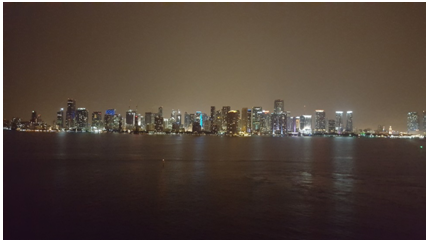A Voyage Data Recorder on ship (VDR) is a device installed on ships to record vital information about the ship’s voyage. It is also commonly known as a “black box” for ships. The VDR is designed to capture data from various sensors and systems on board the ship, including radar, GPS, and communication systems. The data is then stored in a secure and tamper-proof memory unit that is designed to withstand extreme conditions such as fire, collision, and sinking.
What is A Voyage Data Recorder on ship?
The information recorded by the VDR can be used for accident investigation, safety analysis, and operational performance monitoring. The VDR records various parameters, including ship’s position, speed, heading, engine status, bridge audio, and radar data. The VDR can also record information from external sources such as other vessels and shore-based facilities.
The International Maritime Organization (IMO) requires all new ships built after July 1, 2002, to be equipped with a VDR. The VDR must comply with the International Electrotechnical Commission (IEC) standard 61996-1, which specifies the technical requirements for the VDR. In addition, the VDR must be regularly tested and maintained to ensure it is in good working order.
For ships built before July 1, 2002, the International Maritime Organization (IMO) recommends that a simplified version of the Voyage Data Recorder (VDR) called a Simplified Voyage Data Recorder (S-VDR) be installed. The S-VDR records a similar set of information as the VDR, but with a reduced storage capacity and a shorter duration of data recording.
The IMO’s mandatory carriage requirement for the S-VDR applies to ships that are over 3,000 gross tonnage (GT) and engaged on international voyages. The S-VDR should be installed no later than the first survey after July 1, 2006, or the first scheduled dry-docking after July 1, 2006, whichever occurs first.
However, some older ships may not have either the VDR or S-VDR installed as it is not retroactively mandatory. In such cases, shipowners may choose to voluntarily retrofit their ships with a VDR or S-VDR for safety and accident investigation purposes.
The International Maritime Organization (IMO) has established regulations regarding the mandatory installation and use of Voyage Data Recorders (VDRs) and Simplified Voyage Data Recorders (S-VDRs) on ships.
According to the IMO’s International Convention for the Safety of Life at Sea (SOLAS) Chapter V, all new ships of 3,000 gross tonnage (GT) and above, and passenger ships regardless of size, built on or after July 1, 2002, must be equipped with a VDR. The VDR must comply with the performance standards and technical specifications set out in the IMO’s resolution MSC.333(90) and the International Electrotechnical Commission (IEC) standard 61996-1.
For ships built before July 1, 2002, the IMO recommends that a simplified version of the VDR called a Simplified Voyage Data Recorder (S-VDR) be installed. The IMO’s mandatory carriage requirement for the S-VDR applies to ships that are over 3,000 GT and engaged on international voyages. The S-VDR should be installed no later than the first survey after July 1, 2006, or the first scheduled dry-docking after July 1, 2006, whichever occurs first.
Shipowners are responsible for ensuring that their vessels comply with these regulations and for the proper maintenance and testing of the VDR or S-VDR. Failure to comply with these regulations can result in penalties and sanctions from port state authorities and classification societies.



